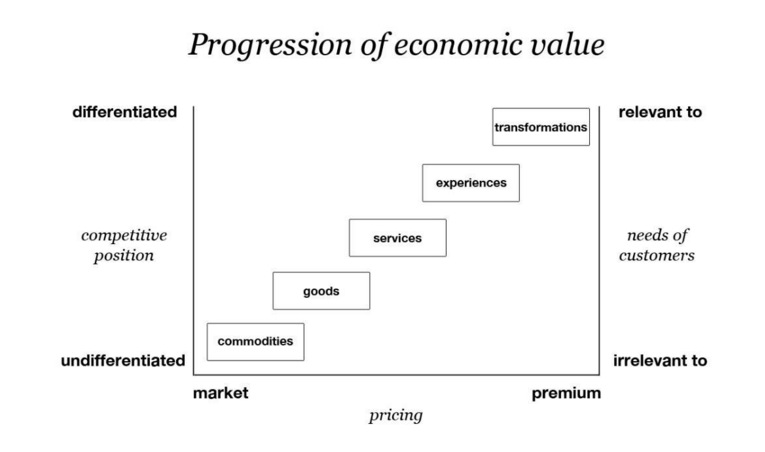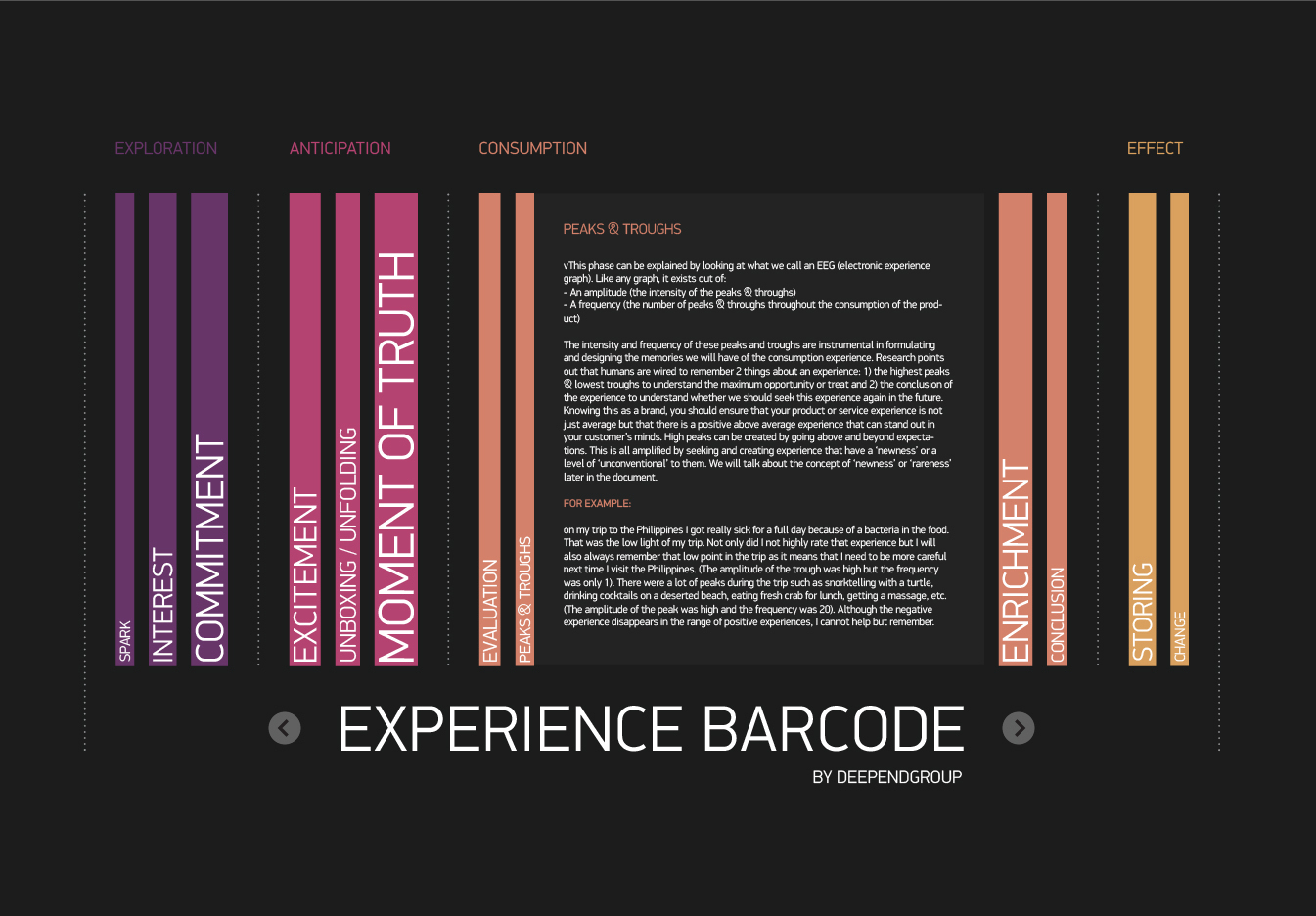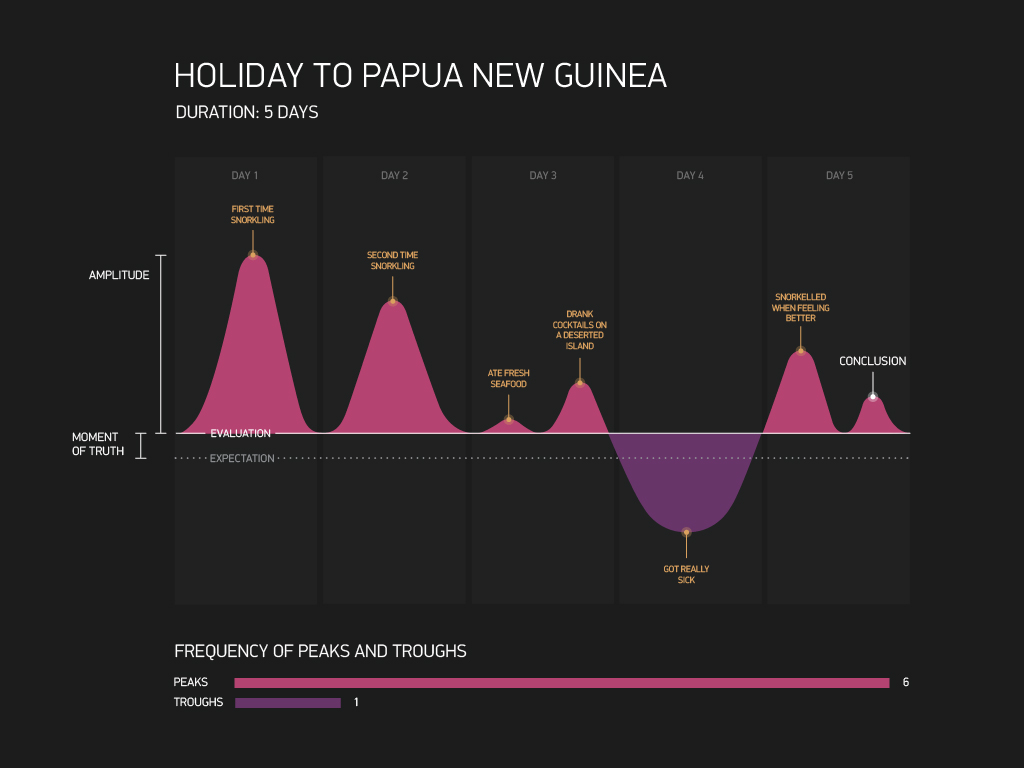The Experience Barcode: why certain memories last forever
Share
What makes certain memories last, and others disappear as quickly as they happened? Kim Verbrugghe looks into the intrinsic ties that are made through first-hand experience and how brands can create moments that cut through the clutter, and deepen their connection to consumers.
 A lasting memory is the product of an experience, whether that is a material thing or an activity. Indeed, have you ever thought about how strange it is that you can remember a carnival ride as a 10 year old as though it happened yesterday, yet you struggle to remember what you ate for breakfast one day ago?
A lasting memory is the product of an experience, whether that is a material thing or an activity. Indeed, have you ever thought about how strange it is that you can remember a carnival ride as a 10 year old as though it happened yesterday, yet you struggle to remember what you ate for breakfast one day ago?
This article explores the idea of an ‘experience barcode’ – a concept that helps define how memorable moments are created, and a tool for brands to build deeper bonds with their audiences.
Setting the context: the experience and transformation economy
What is considered economically valuable has changed over time, along with consumer needs. Today, it’s clear that we have moved out of a service-based economy to an experience-based one, where consumers are engaged in transactions and interactions hinged on the feelings that are gained, rather than just the products or services themselves.
Further to this, we are operating within a transformation economy by charging for the everlasting benefits that customers take away from the product experience (the transformation) such as a change in perception, a new skill or a physical improvement delivered through spending time with that brand.
As such, what makes brands competitive today isn’t the product or service on offer but the experience offered and the transformations provided. Welcome to the experience and transformation economy.
The experience barcode:
Every product experience, whether a material thing or an activity, can be described in four stages: exploration, anticipation, consumption and effect. The experience barcode is a visualisation of this, the DNA of an experience which highlights exactly where products and services could be falling short and/or have an opportunity to elevate themselves in the era of experience and transformation.
The product experience in four stages:
1. Exploration
This stage has three sub-phases, including:
- The Spark – the moment a consumer encounters something they hadn’t thought of or seen before and experiences a sense of wonder. In product and service terms, the spark is often created through the release of a new feature or model, or something that changes the consumer’s perception. For example, ‘I had no idea the Philippines was so beautiful, maybe I should go holiday there’.
- Interest – when the consumer actively desires and looks for more information. They recognise a need they have and begin to consider purchase, potentially undertaking research and starting to imagine the experience the purchase may bring, the way it might make them feel or the problem it might solve. For example, pondering, ‘If I wore this dress on my date night, would I look sophisticated and elegant?’ This is the stage during which the consumer will truly get their first impression of a brand, which is often influenced by how the product or service information is presented. There may very well then be doubts, questions or concerns to be addressed, but the more we can visualise the future experience for the customer, the better we will be able to overcome any roadblocks.
- Commitment – when a final decision is made and the consumer has committed to a product or service. Depending on how smooth this process is, delight may be found in the very act of exchanging funds for receipt of the product. This may also be influenced by how highly the consumer values the ownership of this product. For example, ‘These flights to the Philippines that my travel agent got me are ridiculously cheap! I’m feeling so good about my holiday!’ If the exchange is for receipt of a service, this is the point at which a finite set of expectations and assumptions have been met and a commitment is made without necessarily paying for it. For example, ‘I’ve booked in a hair appointment with new hairdresser. I decided it was time to get a cut.’
2. Anticipation
Anticipation comprises two phases:
- Excitement – immediately after the consumer becomes the owner of the product or service, but before they consume or use it. It is the anticipation of the experience they imagined. For example, ‘I just bought a takeaway brownie from a new café. I can’t wait to have it, but I need to eat my lunch first.’
- Unboxing/unfolding – the anticipation felt before uncovering the hidden, or perhaps unknown object. A beautiful or unique package that has layers to unwrap (think about how Apple have nailed their packaging), a welcome sign to a city or the view of your destination as you land, builds excitement for what’s to come. A travel experience has a constant stream of micro, unfolding-moments as you’re the destination is explored. In the consumer’s eyes, packaging and product are inextricably interlaced. For example, ‘I purchased a new swimsuit for my trip and it arrived in the most amazing packaging along with a handwritten thank you note! I almost couldn’t open it!’
3. Consumption
This comprises four phases as follows:
- Moment of truth – the few seconds during which a consumer decides whether or not their expectations have been met. Whatever expectations they had before the unfolding stage, this is the point in time where they are resetting expectations based on what they experience so as to avoid disappointment as much as possible. This stage sets the bar for the ensuing consumption stage. Imagine our Philippines traveller walking into their hotel room, which looks incredibly posh and luxurious. They now automatically increase their expectations of the rest of the hotel experience. They’ve just set the bar higher. If they had walked into an awful room, their expectations for the rest of the trip might lower, protecting them against further disappointment.
- Evaluation – a collection of reflective micro-moments during the consumption. This is when the consumer considers whether, all factors considered, the experience has been authentic to what was set out from the beginning, and the basic needs they wanted the product or service to fulfil. They evaluate whether the product is doing what was intended or is leading to the outcome anticipated. For example, ‘I wanted this holiday to be relaxing, so I really wanted to make sure I had good sleeps, saw some amazing sights and got some physical activity. So far, the trip has perfectly satisfied all those things.’
- Peaks and troughs – How much lower than my expectation line the product experience went, defines the size of the disappointment (troughs) and vice versa for delight (peaks). The highs and lows of the experiential consumption are the key to formulating and designing the memory formed. This phase is best explained by looking at an electronic experience graph (EEG), which tracks the amplitude (intensity) and frequency (the number) of peaks and troughs throughout the consumption phase. According to Nobel laureate and founder of behavioral economics, Daniel Kahneman, humans are wired to remember two things about an experience: (a) the highest peak and lowest trough, reflective of the maximum opportunity or threat, and (b) the outcome of the experience, reflective of the desire to seek this experience again or avoid it the second time around. A positive memory therefore is not created by an experience that remains level, but rather one that provides multiple peaks of above-average intensity that exceed expectations. For example, ‘During the trip, I got food poisoning which was definitely the low point (trough). I did get to snorkel with turtles, which was a life-changing moment (peak), so the good cancelled out the bad in the end. But, I’ll be much more wary of the eating street food next time.’
- Conclusion – Kahneman also outlines that final moments of an experience play a key role in the overall conclusion left in the mind of the consumer. Here, he notes one tactic to deliver an exciting or more positive conclusion is to end the experience when at a critical peak point (find out more here). For example, ‘The flight back from Manila was so smooth, it made me feel really satisfied overall about the trip.’
4. Effect
The final stage of an experience has two phases:
- Storing – the emotional value gained from an experience during the consumption phase. This might be realised via tangible items like photos that trigger the delight or pain experienced during consumption, via stories shared or memories kept (something seen, heard, smelled, touched or tasted). The memory created is hinged on the emotions felt at the time. For example, ‘I took some amazing shots during my trip and looking at them takes me back to the great times we had – I almost feel like I’m back there, in that moment.’ Interestingly, reflecting on memories often induces something that scientists call ‘positive reinterpretation’. If the experience was positive, it will be remembered very positively and if it was negative, it will be remembered less negative than it actually was in reality. This points again to a key consideration for brands – namely that activities can more easily be positively reinterpreted than material things, as we are the creator of (reconstructing, really) our own memories, and mostly we remember it as better than it actually was. For example, if it rained half the time you were on holiday it is likely that, in the future, you will still positively remember the holiday due to the great experiences and connections that were made overall and you will decide to forget about the rain. You might even convince yourself the rain made your Europe trip more authentic. Whereas with a product, if it is broken, it is a lot harder to positively reinterpret this negative outcome. It doesn’t leave any room for subjectivity.
- Change – the transformation that occurs for the consumer as a result of the total experience. Today, consumers are seekers of personal change and brands can help fulfil that change. Transformations are created with brand and consumer hand-in-hand, as the brand creates the best possible setting for the transformation and the customer determines what that looks like for them. For example, ‘Practising yoga has made me more calm and confident and I have been able to apply that to my work environment.’ But it can be simpler things like changing a perception (a newfound passion for food), improving emotions (like listening to a great song), learning something new (like playing guitar) or forging new connections and better relationships with the environment (such as a closer bond with your brother). Ideally we will try to make this change everlasting, and if we succeed, we get to have more meaningful and longer relationships with our customers.
Creating ‘next-level’ experiences
There are two main ingredients that need to be considered for an experience to boost its chances of delivering consumer satisfaction and being locked away as a long-term memory – enrichment and rarity. Both speak to deepening the connection that consumers experience during the full product experience.
Enrichment pertains to elements that enhance the connection of the individual with themselves, others or the world around them. Things that we can share with friends or people we love, that make us more present in the moment or that can give us a better sense of self. For example, researching holiday options together with a partner can increase the value of the interest stage.
Rarity dictates the ranking or importance that will be placed on an experience, ultimately determining the speed at which it can be recovered from our memory. If a certain experience is the only one of its kind in the consumer’s mind, it is likely to be remembered fondly and for a long time due to its rarity. For example, ‘I snorkelled with turtles in the Philippines and can truly say that it was one of the most amazing experiences of my life.’
Key learnings from the experience barcode
Using the experience barcode, it is possible to see that different patterns exist based on the product or service category that an experience is attributed to.
Travel products and services often have a far more intricate consumption phase in the mind of the consumer and so have a greater chance of forging a long-term memory. The experience of purchasing a new technology product however is much more fleeting – it will likely satisfy an impulse desire but not form a meaningful memory given the lack of peaks and troughs associated with it, the lack of rarity and enrichment.
Personal preferences also play a key role in the amplification applied to different product or service experiences. Indeed, the level of enrichment or rarity involved in any given experience will differ for each individual involved in an experience.
For example, the experience had by a tech-savvy person in carefully unboxing a new, cutting-edge wearable device will leave them far more enriched than someone who doesn’t value technology as much (they will just rip open the package without much thought).
Conclusion
Memories last for a reason – they can be used for selfish or selfless reasons, used to recommend products, re-live joy, brag and/or serve as a learning for the future. And consumers are purchasing with an expectation of receiving more than just instant gratification – they want everlasting positive experiences, they want to create memories.
Using the experience barcode as a tool, brands can map and craft memorable experiences for consumers, ensuring there is a lesser chance of negative interaction and increased potential for heightened satisfaction.
This involves a delicate process of defining the needs and wants of the audience, building out the individual phases of the product experience you want them to have and using unique amplifiers to increase the chance of building a deeper brand connection.
With so many competitive offerings in market however, success also requires brands to create experiences that have their own unique DNA. The Experience Barcode is the beginning, but as always the onus remains on brands to differentiate their offerings in a way that will speak to their customers, providing an experience worth remembering.
_
Kim Verbrugghe is senior strategist at Deepend, part of the Deepend Group, and has delivered digital strategic direction across platforms for brands such as Hamilton Island, P&O Cruises and Merlin Entertainment to name a few.


















